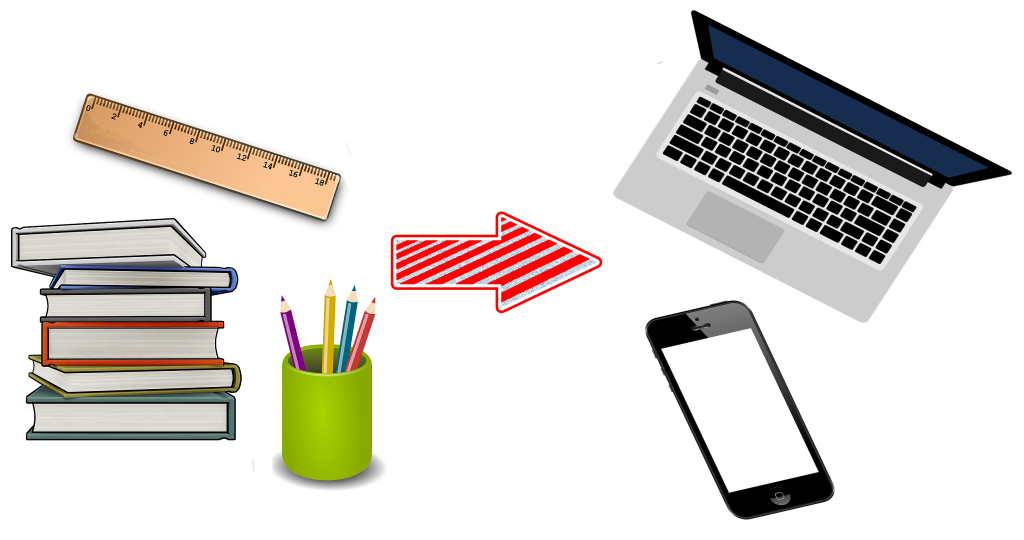
In past decades, the rapid development of technology led to technological breakthroughs that shaped the world we live in. Now, it is safe to say that technology has a major influence on our daily life and the way we use technology has completely transformed the way we live our lives.
Education is no exception. Some of the technological innovations forever altered our process of learning and education. Modern educators realize that in order for education to be purposeful and effective they need to embrace the trends and push the classroom doors wide open to new tech trends.
The use of technology in the classroom is no longer a matter of choice, but a necessity. Traditional ways of learning, in which the lecturer is the center of attention that transfers the knowledge are getting repulsive and uninteresting to students all around the world. Cutting edge learning gadgets and software brought an altogether new way of learning which enables scholars to be active participants in the educational process.
In our last post we explained how one productivity tool can make the difference between boredom and curiosity in the classroom. Now we take a look at some of the gadgets that are used to make time spent in the classroom more dynamic and fun.
Tablets
Tablets have successfully succeeded books and those old bulky computers. Students don’t need to lug heavy stuffed backpacks around anymore. They can go beyond the boundaries of a book and find the most up-to-date information in a matter of seconds. Although some educators argue that tablets are only hampering students attention span, the vast majority highlights the benefits of using these devices in classrooms.
According to a survey, 81% of teachers believe tablets enrich classroom education. First of all, they are intuitive and easy to use, even toddlers know how to use them. Also, there is a myriad of educational smartphone and tablet apps that can be installed with a few taps of a finger. Furthermore, having a device that replaces school supplies like books, calculators, pen and paper is quite handy and money-saving.
Remember the old days when you turned in your assignments on a sheet of paper? Well, that’s in the past now, everything is done digitally via tablets. Students turn in their homework online and professors can grade them in a matter of minutes. The downside is you can’t use the “The dog ate my homework” card anymore.
Interactive Whiteboards
 First interactive whiteboards were not even conceived as teaching tools, instead, they were used for office presentations. Soon after educators realized the potential behind them these boards replaced chalk and dusty blackboards for good. They make the learning more interactive and enjoyable.
First interactive whiteboards were not even conceived as teaching tools, instead, they were used for office presentations. Soon after educators realized the potential behind them these boards replaced chalk and dusty blackboards for good. They make the learning more interactive and enjoyable.
Smartboards enable educators to cover the teaching materials in creative and entertaining ways that were not possible before. Likewise, students learning experience and participation is enhanced. They are more involved and attentive as they don’t need to worry about note-taking. Also, students simultaneously write and solve various tasks on interactive whiteboards. This leads to better collaboration among themselves as they try to find the best solutions as a team.
VR Glasses
Although VR glasses are not yet widely used for educational purposes a number of schools included them in their curriculum. With VR glasses educators have a powerful medium that enhances the teaching materials and boosts student motivation.
They can present information in new, unique and exciting ways. Instead of reading and trying to visualize from books students can take the first-row seat and experience everything in a 3D world. By doing so, students gain a better impression of everything they previously learned.
VR glasses are often used to simulate and recreate famous historical events or embark on a field trip to some of the most remote areas of the world. Organizing a tour through some of the most famous world museums was unimaginable and now students have the ability to do it without leaving the school premise.
Technology has undeniably changed the face of education and will continue to do so in the future. Exposure to new technologies and gadgets improves students technical skills and prepares them for the future work environment.
Which tech innovation will find its application among teachers and students in time to come? 3D printing, Artificial Intelligence, Gamification? It’s hard to predict. Yet, one thing is for sure, at one point the gadgets we use now will become obsolete and replaced by new emerging tech tools which will find a way into the 21st-century classrooms.



